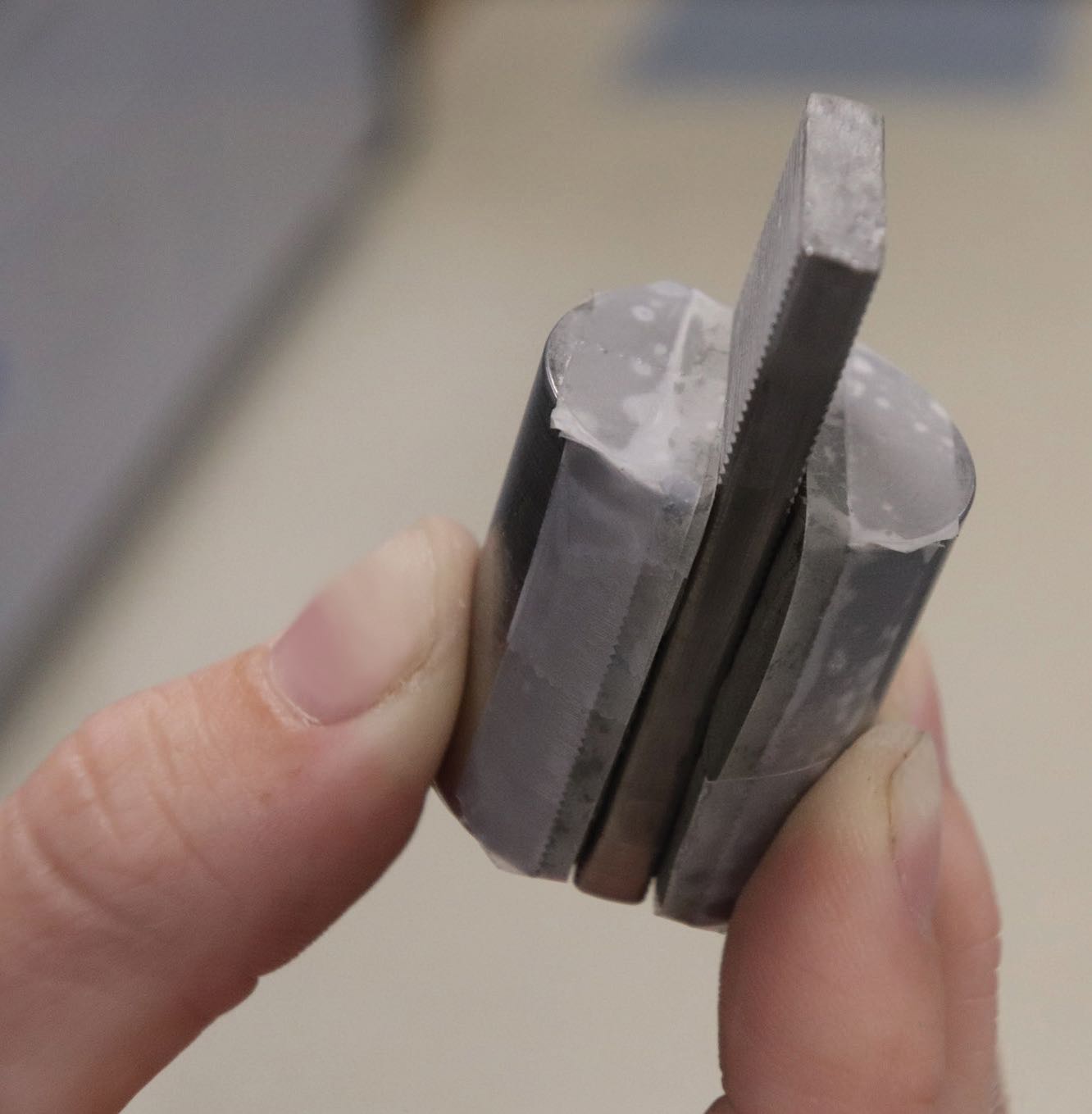Administration of the project
Frictional healing: Prediction of potential earthquakes
By Dr. Neil Canter, Contributing Editor | TLT Tech Beat June 2023
Frictional healing describes a time-dependent increase in asperity contact between rock surfaces at the micro- to nanoscopic scales.
HIGHLIGHTS
• A parameter known as frictional healing describes how a geological fault can restrengthen and store elastic energy between geological events such as earthquakes.
• A new study shows that frictional healing in slow slip events may involve slow movements on a fault that cannot be felt.
Friction remains as one of the most important parameters that tribologists measure to better understand specific applications and what measures may need to be taken to improve their efficiency. But there are other phenomena where friction is becoming a potential parameter that needs to be better understood.
An interesting example is the natural occurrence of earthquakes. In a previous TLT article,1 a study about the role of dynamic friction in earthquakes was discussed. The researchers indicated that frictional ruptures along pre-existing faults in the Earth’s crust can trigger earthquakes. Dynamic friction produced during the earthquake is most affected by slip velocity, which is a measure of how rapidly the two sides of a fault move past each other as well as other effects. Simulated earthquake testing in the laboratory showed that there is a complex relationship between dynamic friction and slip rate.
Demian Saffer, director of the University of Texas Institute of Geophysics at the Jackson School of Geosciences in Austin, Texas, says, “Prior to 2001, geologists had a relatively simple view of the mechanism for movement of rocks in the Earth’s surface, in which tectonic fault lines at the boundary of plates were envisioned either to creep continuously over time, or to remain locked together and storing up static energy that could all of a sudden fail leading to a dynamic earthquake. This on–off mode indicates that fault lines would either be stable or capable of unstable states.”
Researchers are now realizing that fault motion is not that simple. Saffer says, “A spectrum of slip modes are present that describe how rocks move past each other.
Some events may occur that release stored energy in a transient manner that does not induce a discernible physical event such as shaking. This is analogous to a slipping clutch in an automobile transmission. There may be an occurrence that the driver will notice, but the clutch could slip to such a small degree that it will not be felt.”
The current thinking among geologists is that predicting earthquakes is a complex process. Saffer says, “We do not know what we are missing. To predict the occurrence of earthquakes, geologists need to understand what physical laws apply.”
One parameter that may help to explain the behavior of fault lines is known as frictional healing. Saffer says, “This term describes how a fault restrengthens and stores elastic strain energy between geological events such as earthquakes. Friction will increase over time due to physical and chemical interactions, creep, plastic deformation and grain-indentation, leading to the coupling of asperities on different sides of the fault.”
Studying the dynamics of frictional healing is challenging because of the difficulty in accessing fault lines that are deep in the Earth. A new study has just been reported that provides insight on friction and indicates that slow slip events may take place due to ultralow frictional healing.
Slide-hold-slide tests
Saffer and his colleagues focused on studying the importance of frictional healing in slow slip events, which involve very slow movements on a fault that may not be felt. To study the phenomenon of frictional healing, the researchers decided to examine the Hikurangi subduction zone that is located offshore from New Zealand. Saffer says, “Hikurangi is part of the ‘ring of fire’ that encircles the Pacific Ocean from Japan south to New Zealand, east to South America and then north to the U.S. Pacific Northwest. The attractive feature of the Hikurangi region is there is a regular reoccurrence of slow slip events that repeat every two years. This phenomenon is occurring relatively shallow in the Earth’s crust (less than 5-15 kilometers below the surface) over a large area making it much easier to study.”
Frictional healing describes a time-dependent increase in asperity contact between rock surfaces at the micro- to nanoscopic scales. Saffer says, “Frictional healing can be measured in the laboratory through the use of slide-hold-slide (SHS) testing. It is reported as the rate of increase in fault strength (or friction) per a logarithmic (10-fold) increase in time.”
Figure 3 shows a miniature double direct shear (mini-DDS) apparatus that contains samples loaded onto the exterior blocks and then sandwiched onto the middle block. The mini-DDS is then taped up and placed into a container and loaded into the SHS tester.

Figure 3. Samples from a fault line sediment are loaded into a miniature double direct shear (mini-DDS) for evaluation in the slide-hold-slide tester. The samples are loaded onto the two exterior blocks and then sandwiched onto the middle block. Figure courtesy of the University of Texas Institute of Geophysics.
Samples from Hikurangi were water-saturated gouges that were evaluated using the SHS under an effective stress of 25 megapascals, pore pressures between 5 and 10 megapascals and driving velocities between 1 and 30 micrometers per second. The results show that frictional healing is occurring at an ultralow rate.
A comparison was made with samples obtained from the Calaveras Fault, which is a branch of the San Andreas Fault in Northern California. Samples taken from Calaveras produced frictional healing rates at least two orders of magnitude higher than the Hikurangi data as measured by SHS. This result is an indication that there is a direct correlation between higher frictional healing and more dynamic slip modes such as earthquakes.
One of the key reasons for why the Hikurangi formation exhibits very slow frictional healing may be the composition of the rock. Saffer says, “X-ray diffraction analysis showed that the Hikurangi samples contain greater than 55% by weight of clay that is predominantly smectite. This soft material may be important in controlling the slow rate of healing leading to very small slip events.”
Future work will involve determining the frictional healing in the fault line off the coast of the Pacific Northwest that is present from Vancouver, British Columbia, Canada, to Northern California. Saffer says, “We believe that the last episode from this area was on January 26, 1700, because of evidence of a tsunami that reached Japan even though that area did not feel the effect of an earthquake. Our concern is that frictional healing may be very high in this fault line because the rock formation has been restrengthening and storing strain energy for over 300 years. Obtaining samples is our goal, but that will be very difficult due to the depth of the fault line in that region, making it challenging to access or sample directly.”
Additional information can be found in a recent article2 or by contacting Saffer at [email protected].
REFERENCES
1. Canter, N. (2017), “The role of dynamic friction in earthquakes,” TLT, 73 (11), pp. 14-15. Available here.
2. Shreedharan, S., Saffer, D., Wallace, L. and Williams, C. (2023), “Ultralow frictional healing explains recurring slow slip events,” Science, 379 (6633), pp. 712-717.
Neil Canter heads his own consulting company, Chemical Solutions, in Willow Grove, Pa. Ideas for Tech Beat can be submitted to him at [email protected].


Be the first to comment